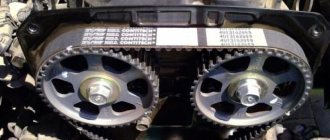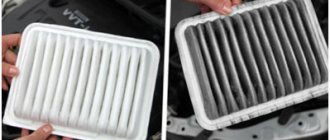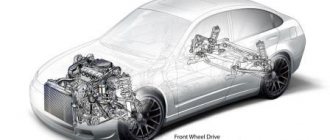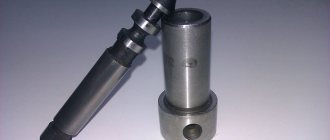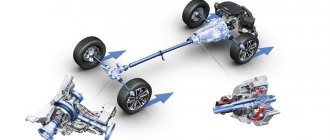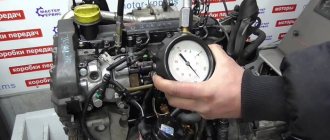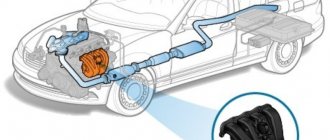The modern automotive industry offers the world of car enthusiasts a wide variety of vehicles that allow them to carry out any tasks related to transportation. Moreover, the cars differ from each other not only in appearance. Every motorist has his own idea of what the best car should be. And most often the technical part of transport is of key importance.
Under the hood, a modern car has an internal combustion engine running on gasoline or diesel fuel. With increasing environmental standards, manufacturers are not only making powertrains with cleaner emissions, but also developing various options for electric vehicles and hybrids. However, this is a topic for another review . Now we will focus on one feature of operating a car whose power unit runs on gasoline.
Most motorists know that gasoline evaporates very quickly. Even if the fuel is in a closed container, as soon as it is opened, its vapors escape into the atmosphere. For this reason, even if the car is driven extremely rarely, a full tank gradually becomes empty.
To ensure that the fuel remains in the gas tank and a large amount of gasoline vapor does not enter the atmosphere, an EVAP system, or adsorber, is installed in the tank. Let's consider why it is needed in a car if old cars did not have it. We will also discuss the principle of operation, how cleaning occurs and how to recognize system malfunctions.
What is an adsorber and EVAP system
First, let's understand the terminology. The adsorber, or EVAP system, is a kind of car separator that cleans the air leaving the gas tank from gasoline vapors. This device prevents direct contact of the air in the tank with the atmosphere. In its simplest version, this is a regular carbon filter, which is part of the gasoline vapor recovery system (EVAP).
This system is mandatory for any modern car. Some motorists mistakenly call it an absorber. Although the principle of these systems is similar, adsorbers are still used for cars. The reason lies in the subtleties of the process of purifying gases entering the system.
The absorber absorbs unpleasant odors contained in the stream by filtering through a liquid substance through which the gas to be purified is passed. Such a device is also equipped with a sump and a liquid purification system for further operation of the system. The peculiarity of this installation is that cleaning occurs due to the absorption of the flow by the entire volume of the filter. The complexity of the design and the entire cleaning process does not make it possible to use absorbers in cars. They are mainly used in production facilities, the operation of which is associated with massive emissions of dirty air into the atmosphere.
The adsorber also removes pollutants from the air, but it does so on the basis of surface absorption. This means that the entire liquid component of gasoline vapor condenses on the surface of the separator and returns to the gas tank. The air is purified by being supplied to the intake manifold for removal in the cylinder along with the burning air-fuel mixture. Essentially, this is a small self-cleaning separator with a settling filter.
How to disable or remove the adsorber on a car and do you need to reflash the ECU?
You need to understand that when the adsorber is removed, the solenoid valve is turned off, which is directly connected to the controller and controlled by the latter.
This will lead to error p0443, which we already mentioned above. The tubes are also silenced, in particular the one that goes to the intake manifold.
What is the disadvantage of such a shutdown?
The fact is that through the tube that goes to the intake manifold, air is constantly sucked in; even in idle mode, the so-called small purge of the adsorber occurs. At high speeds from 1500 – 2000 and above there is a lot of purging.
In the ECU firmware, constant air leaks and the flow of fuel vapor are taken into account when forming the air-fuel mixture, despite the fact that all this goes past the mass air flow sensor, the causes of the malfunction of which can be found out by clicking on the link.
If you plug the pipe, which many people do, a certain amount of air will not flow into the intake manifold bypassing the ECU, but the latter still takes them into account.
That is, the controller takes into account one volume of air, but another (smaller) one actually enters. As a result, the amount of fuel is generated by the ECU based on more air than is supplied. This leads to an over-enrichment of the air-fuel mixture.
As a result, the engine does not work correctly, because the mixture is constantly over-enriched where it is and is not needed, and fuel consumption increases.
It is also worth talking about the transient mode of operation of the engine, which can manifest itself when approaching an intersection, a traffic light, lying to a policeman, at the moment when the gas is released.
At this moment, a failure may occur - a decrease in speed below idle. The engine seems to choke, it doesn’t have enough air, the reason is an over-enriched mixture. After a few seconds, the situation is resolved electronically.
Therefore, it would be correct to disable the adsorber in the following ways:
- After removing the device, install a nozzle with a diameter of 1 mm into the tube that goes directly past the mass air flow sensor. This will, at least partially, solve the problem, since only air without gasoline vapors will be supplied in doses.
- The ECU is being reflashed (difficult). If it is impossible to remove the Check error, you may need engine chip tuning, which is expensive.
- Dismantling the entire system except the solenoid valve, which operates idle.
- By installing a resistor (valve emulation) in the electrical circuit at 200 - 250 Ohms and 2 watts. To do this, bend the legs of the resistor and insert them into the valve chip. We secure everything with electrical tape. But this doesn't always help.
How to disable the adsorber on a VAZ 2110, 2112, 2114
Taking into account the recommendations above, we do the following:
- Disconnect the power connector from the valve.
- Disconnect all pipes from the adsorber and remove the latter along with the mount.
- We fix the valve in a place where the plug with wires and pipes will reach.
- Connect a hose with a fuel filter to the lower fitting (see photo below).
- To the upper end fitting we connect the pipe going to the intake manifold.
- We put another filter on the pipe going into the tank, similar to the first one.
With this scheme, when the valve opens, clean air enters the system, albeit without gasoline vapors.
We exclude the valve
This method is even simpler. We dismantle everything, including the valve. We put a fuel filter on the pipe coming from the gas tank, and we plug the pipe going to the intake manifold with a bolt and clamp.
The consequences of this method are described above, but this method also has the right to life.
As for Priora, Granta, Lada Largus, Gazelle and other cars, the absorber is turned off in similar ways as described above.
Toyota Chaser
It is worth considering one of the foreign cars, for example, the Toyota Chaser.
The shutdown principle is similar to the previous ones:
- Locate the canister valve. It is located near the mass air flow sensor on the air filter housing.
- Disconnect the chip with wires and all pipes from it (Check may light up on the instrument panel).
- Find the adsorber, disconnect the pipes from it and plug it.
- Disconnect the pipe going to the valve from the throttle assembly and plug it with a bolt and clamp.
- Place a fuel filter from a carburetor VAZ on the pipe going to the tank.
What's the catch in flashing from Euro 4 to Euro 2?
Many people change the ECU from Euro-4 to Euro-2, as a rule, they do this when removing the catalyst and installing a blende. At this moment, the canister valve may turn off (on purpose or accidentally), and the ECU does not control the latter and does not control it in any way.
As a result, if the valve malfunctions, the engine will run intermittently, and the error will not be displayed on the instrument panel. To make sure of this, turn off the valve and observe the operation of the motor.
If the version is confirmed, plug the canister pipes and turn off the valve; the controller still does not control it.
Why do you need an adsorber?
The first development of a car adsorber appeared as an additional system that increased the environmental friendliness of the car. Thanks to this device and the modernization of the power unit, the car could comply with the Euro2 eco-standard. This system itself is not needed for better engine performance. If you correctly adjust the gasoline injection , set the ignition and equip the car with a catalyst , the vehicle will comply with more stringent environmental standards.
This system was not used in carburetor engines. For this reason, there is always the smell of gasoline near an old car. If the vehicle is stored outside, it is hardly noticeable. But it is no longer possible to stay in a garage next to such a car for a long time without signs of gasoline vapor poisoning.
With the advent of injection internal combustion engines, the adsorber is an integral element of any car. The fact is that the environment is polluted not only by the removal of exhaust gases through the exhaust pipe. Gasoline vapors also enter the air, and even the highest quality engine with a modern exhaust gas purification system without this system for purifying vapors generated in the gas tank will not meet the high requirements of environmental protocols.
On the one hand, it would be possible to close the gas tank hermetically, and the problem is solved - the fumes do not enter the environment. However, this would not mean that gasoline would stop evaporating. As a result, the pressure in a sealed tank (especially during the hot season) will increase. This process is undesirable for the fuel system. For this reason, the tank must have ventilation.
It turns out to be a vicious circle: the tank cannot be closed hermetically so that gasoline vapors do not increase the pressure in it, but if ventilation is provided in it, these same vapors inevitably enter the atmosphere. The very purpose of the adsorber is to maintain the pressure in the tank at atmospheric level, but at the same time the environment is not polluted with harmful fumes.
In addition to environmental concerns, automakers have improved the safety of the vehicles themselves. The fact is that when the car is stored in a garage, without an adsorber, the air near it will be saturated with toxic fumes. Inevitably, this air enters the vehicle interior. Even with the windows open while driving, it will take time for these volatile substances to dissipate. Because of this, the driver, as well as all passengers, partially inhale polluted air and are poisoned.
